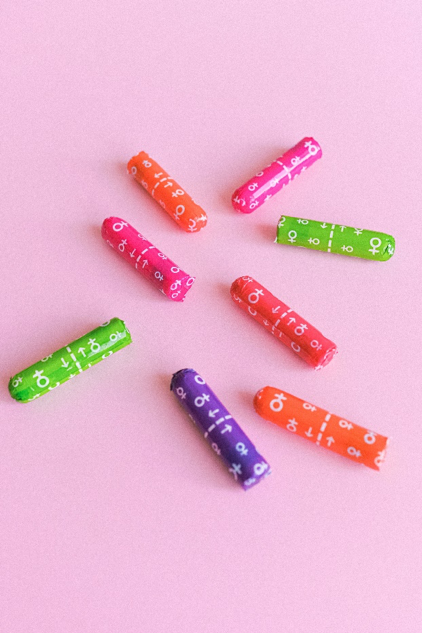The tampon debate
Are most really, truly, safe now?
Tampons used to be (and still carry warnings to this effect on at least some websites) associated with Toxic Shock Syndrome – and it was because of this that manufacturers were forced to remove Polyacrylate Rayon and Carboxymethylcellulose from them as these two chemicals appeared to attract the bacteria that caused Toxic Shock Syndrome.

If you, your clients, your families are still using the most promoted brands of tampons you might be surprised to know that there are still risks with the materials that are used with them, especially as they are in direct contact with the vagina’s delicate mucous membranes. Unfortunately, the conventional ingredients may contain pesticide residues, some of which are known carcinogens. As you will see later, this concern is not just limited to tampons.
Says Meghan Telpner “The average woman menstruating for five days a month for 38 years will use approximately 11,400 tampons in a lifetime, with direct contact to the chemicals in tampons for 2,200 days. And pads. Pads too. Oh, and also baby diapers. Yes, these chemicals are in diapers, ear swabs, cotton pads and toilet paper, too.”
While some women have switched to eco options such as Moon cups, washable pads and period pants, standard tampons are composed of
- Conventional Cotton: one of the most heavily sprayed crops in the world.
- Polyester: plastic derived from crude oil. It doesn’t hold liquid well, making it a surprising ingredient
- Viscose Rayon: derived from plants, in North America generally wood pulp, sugar cane and soy. Elsewhere it might be from bamboo
They also may contain:
- absorbency enhancers
- synthetic deodorants
- artificial fragrances
Pesticides which might be found in conventional tampons include:
- Malaoxon & Malathion
- Dichlofluanid
- Mecarbam
- Procymidone
- Methidathion
- Fensulfothion
- Pyrethrum
- Piperonyl Butoxide
Meghan suggests the choice of organic cotton tampons is they way to go for women who prefer tampons to other methods.
For her full article, go here: https://www.meghantelpner.com/blog/tampons-the-dioxin-glyphosate-vagina-cocktail/
According to the Irish Times, “Period products are the fifth most common item to be found on beaches around Europe.” (https://www.irishtimes.com/life-and-style/plastic-free-periods-good-for-you-and-the-environment-1.4043784). If you were wondering about standard ‘pads’, the Irish Times believes each packet of pad contains the equivalent of five plastic bags.
The shocking demonstration below, comparing what happens when you set a cotton pad on fire vs a ‘standard’ pad, illustrates what this means in practice and is, quite frankly, jaw dropping:

Meghan Telpner is an author, nutritionist, founder of the Academy of Culinary Nutrition and The Clubhouse Community
Some ‘green’ period product brands:
https://wearedame.co/apps/help-center